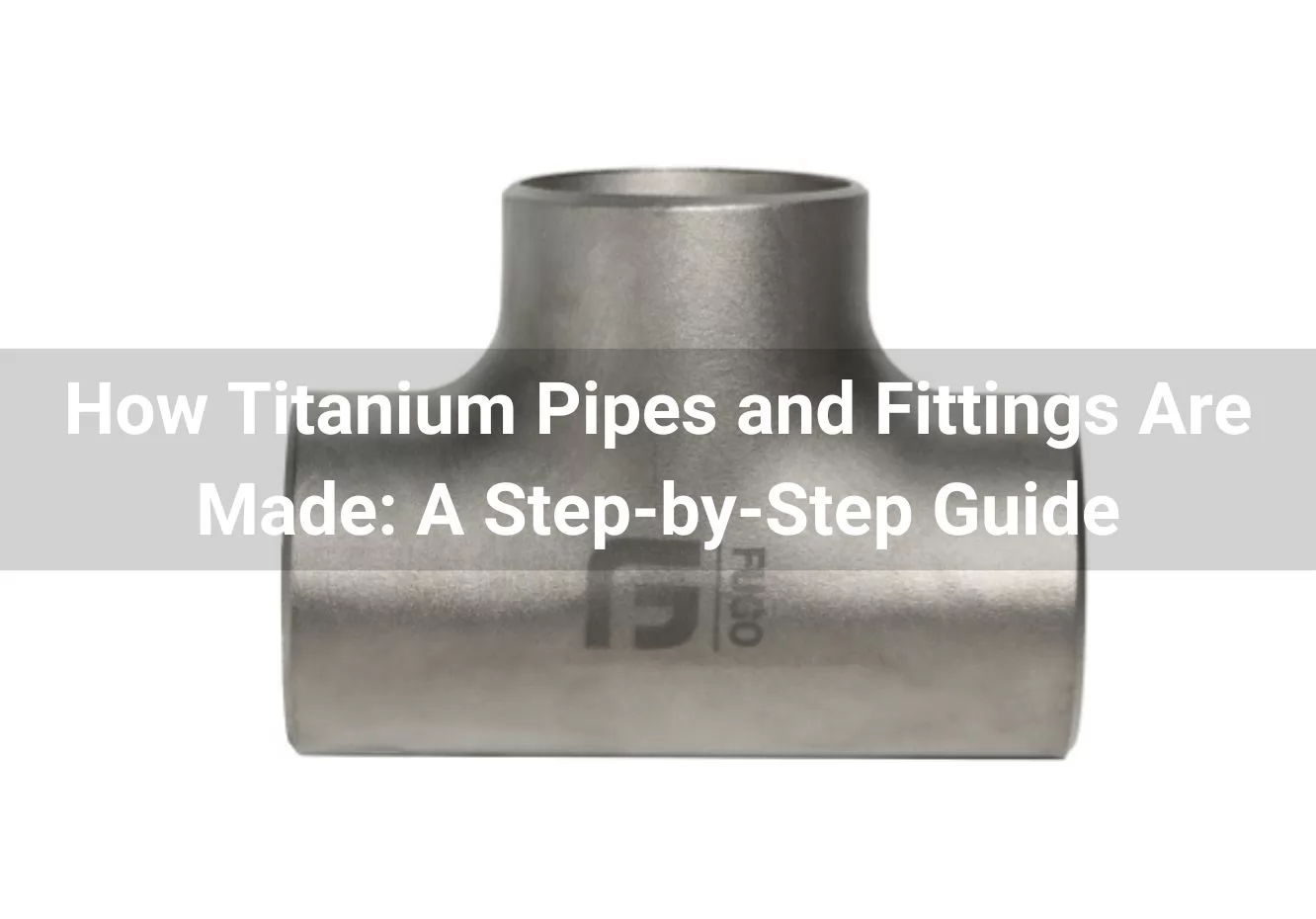


Titanium pipes and fittings are essential components in industries such as aerospace, chemical processing, marine engineering, and power generation due to their exceptional strength, corrosion resistance, and lightweight properties. Manufacturing these components requires precision, expertise, and advanced technologies. This guide provides an in-depth look at the step-by-step process involved in creating titanium pipes and fittings.
The manufacturing process for titanium pipes and fittings begins with the careful selection of high-quality titanium materials or titanium alloys, tailored to the specific requirements of the application. Pure titanium grades such as Grade 1, Grade 2, and Grade 3 are often chosen for their excellent corrosion resistance and biocompatibility, making them suitable for industries like medical and chemical processing. Titanium alloys like Grade 5 (Ti-6Al-4V), Grade 7, Grade 12, and Grade 16 are selected when enhanced strength, superior temperature tolerance, or additional corrosion resistance is required. Each grade is evaluated to ensure it meets the necessary performance characteristics for its intended use, forming the foundation of a reliable and durable product.
Titanium is initially available in the form of ingots, billets, or sheets. These raw materials undergo chemical and mechanical inspection to ensure they meet industry standards. Impurities and surface defects are removed through cleaning and machining processes.
Titanium pipes are manufactured using two primary methods: seamless pipe production and welded pipe production, each tailored to specific size ranges and application requirements. Seamless pipes are typically available in sizes up to 8 inches in diameter, while welded pipes range from 5 to 36 inches in diameter.
In the seamless pipe production process, the journey begins with a solid titanium billet. The billet is heated and pushed through a die in a process known as extrusion, forming a hollow tube. This hollow billet is then pierced and rolled to achieve the desired wall thickness and diameter. The final step involves drawing and sizing, where the tube is stretched or drawn through a series of dies to ensure it meets precise dimensional specifications.
The welded pipe production process starts with titanium sheets being rolled into cylindrical shapes during the sheet rolling stage. These cylindrical sheets are then welded along the edges using specialized methods like TIG (Tungsten Inert Gas) welding, performed in a controlled environment to preserve the material's integrity and prevent contamination. After welding, the pipes undergo annealing, a heat-treatment process that enhances their mechanical properties, such as strength, ductility, and durability.
These manufacturing techniques ensure the production of high-quality titanium pipes suitable for a wide range of industrial applications, from aerospace to chemical processing.
Titanium and titanium alloy pipes and fittings are manufactured to precise specifications, with seamless pipes typically available in sizes up to 8 inches and welded pipes ranging from 5 to 36 inches in diameter. These products are further classified by wall thickness, adhering to schedules such as Sch 5s through Sch 160s, to meet diverse application needs.
The production of titanium fittings, including elbows, tees, and reducers, involves a range of specialized techniques designed to achieve optimal shapes and functionality. Hot forming is commonly used, where titanium billets or pipes are heated and pressed into specific shapes using molds. For applications requiring precision without the use of heat, cold forming is employed, utilizing high-pressure equipment to shape titanium at room temperature. Another advanced method is hydroforming, which applies hydraulic pressure to create complex shapes while ensuring uniform thickness and strength. Additionally, for multi-piece fittings, welding is performed in an inert gas environment to prevent contamination and maintain the integrity of the material. Together, these manufacturing processes enable the creation of high-quality titanium and titanium alloy pipes and fittings that are robust, reliable, and well-suited for demanding industrial applications.
Both pipes and fittings undergo heat treatment to enhance their mechanical properties. This process improves their strength, ductility, and resistance to stress corrosion cracking, making them suitable for demanding applications.
The surfaces of titanium pipes and fittings undergo treatment to ensure smoothness and enhance corrosion resistance, making them suitable for various applications. Sandblasting is a common technique used to remove surface impurities and improve the overall appearance of the components. For applications requiring clean fluid flow, polishing is employed to create a smooth, reflective surface. Additionally, pickling and passivation are performed to enhance corrosion resistance by forming a durable protective oxide layer on the titanium surface. These finishing processes ensure that the pipes and fittings meet both functional and aesthetic requirements.
Titanium pipes and fittings undergo rigorous quality control measures to ensure they meet stringent industry standards and performance requirements. Dimensional inspection is conducted to verify that the components comply with specified sizes and tolerances, ensuring precision in their manufacture. Non-destructive testing (NDT) techniques, such as ultrasonic testing and X-rays, are used to detect internal and surface defects without damaging the material. Additionally, pressure testing is performed to confirm the integrity and performance of the pipes and fittings under high-pressure conditions, ensuring their reliability in demanding applications. These quality control processes are essential for maintaining the durability and safety of titanium products.
After passing quality checks, each pipe and fitting is marked with essential information, including material grade, size, and manufacturer details. Certificates of compliance are issued, ensuring the products meet international standards like ASTM or ASME.
The final products are carefully packaged to prevent damage during transportation. Protective measures, such as wrapping and boxing, ensure the titanium pipes and fittings reach their destination in pristine condition.
Titanium pipes and fittings offer numerous advantages, making them indispensable in various industries:
The manufacturing of titanium pipes and fittings is a meticulous process that combines advanced techniques, stringent quality control, and expertise. By understanding this process, industries can appreciate the value of these components in delivering reliable performance in challenging environments. Whether for aerospace, energy, or chemical processing, titanium pipes and fittings are an investment in quality and efficiency.Contact us now, Get more information and a quote!



Fugo Tech is focused on the manufacturing of clad metal plate and distributes the Stainless Steel, Titanium, Nickel Alloy, Zirconium and other non-ferrous metal pipes, fittings, flanges, and fasteners.